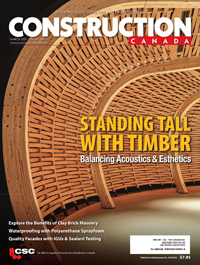The Devil is in the Details: Maximizing continuous insulation in commercial construction
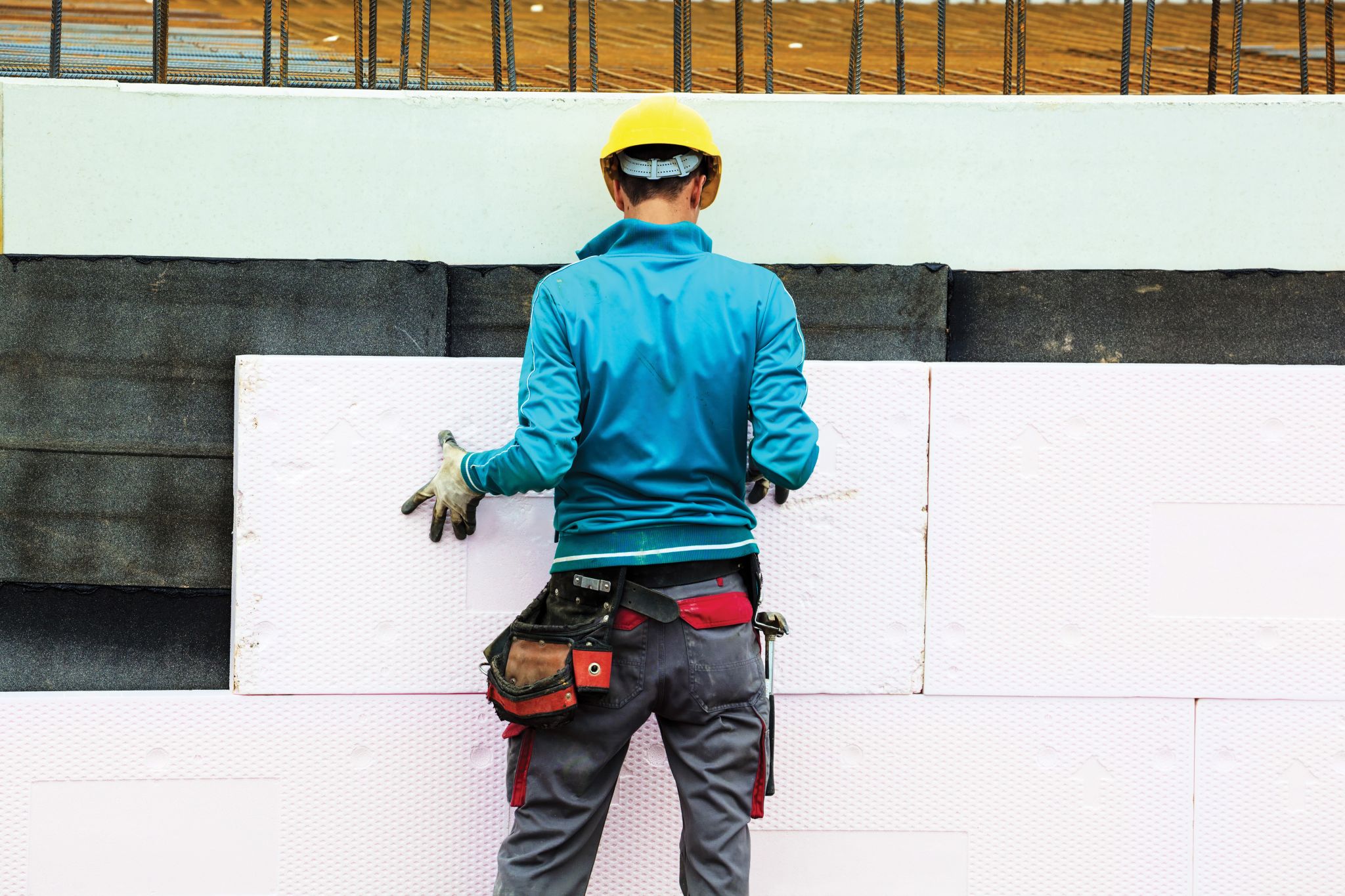
By J.R. Babineau
In commercial construction, continuous insulation (ci) is no longer the exception—it has become the norm. Both the National Energy Code for Buildings (NECB) and the National Building Code of Canada (NBC), along with green building programs, have set higher efficiency requirements. At the same time, the industry is increasingly recognizing the building enclosure’s role in overall operational performance.
Traditional cavity insulation alone cannot prevent thermal bridging, but, when specified with continuous insulation, thermal protection is evenly maintained throughout the structure, leading to a more energy-efficient, comfortable, and durable building. (Reducing the risk of thermal bridging also cuts down air leakage and condensation that otherwise leads to mould, rot, rust, and indoor air quality [IAQ] problems.)
As its name suggests, ci refers to insulation continuous across all structural members without thermal bridges (other than fasteners and service openings). It can be installed on the interior, exterior, or is integral to any opaque surface of the building envelope. This outcome is best delivered when teams of architects, specifiers, contractors, builders, applicators, building enclosure consultants, and commissioning agents work together early and often. Simply indicating “by others” on specifications and drawings is not sufficient. This is because while ci and its benefits are well understood, the big differences in performance come from addressing the seemingly minor details—transitions, attachments, and balconies.
Choosing an insulation product
In commercial construction, foam sheathing is primarily used for ci applied outside exterior sheathing materials such as exterior-grade gypsum. The two primary material categories, thermoplastics and thermosets, offer their own product options. Expanded polystyrene (EPS) and extruded polystyrene (XPS) are thermoplastics, while polyisocyanurate (polyiso) is a thermoset.1
These products are lightweight, easily installed, and, when added to the exterior assembly, provide the ci layer needed to prevent the thermal bridging that can drastically decrease wall system energy efficiency.

However, when selecting a product, thickness is a critical consideration. Builders and applicators will run into few problems when installing rigid foam insulation at 25 mm (1 in.) or less thick. As the foam application gets thicker (to meet R-value or permeance requirements), it is more likely to cause a chain reaction of additional issues. Thickness drives fastener length, cladding fastener length, cladding supports, and integration with flashings and door and window jambs. It is important to identify a product meeting the building requirements at a minimum thickness.
All three materials offer varying degrees of added energy efficiency depending on thickness, but there are differences in R-value, permeance, and fire resistance to consider.
EPS
EPS has an R-value of approximately 4 per inch (i.e. 0.70 RSI)—the lowest of the three materials. Also, at a standard thickness of 1 per inch, EPS is semi-permeable to water vapour. While still considered ‘closed-cell,’ polystyrene beads are expanded during the manufacturing process to fit a mould. This results in small spaces or gaps that allow for moisture transfer. Using a vapour-open material can be acceptable when an interior wall vapour retarder is built into the design.
XPS
Created by mixing molten polystyrene with a blowing agent, and then extruding the foam through a die to the atmosphere, XPS foams have better durability and are less permeable than EPS. At 25 mm (1 in.), XPS sheathing is considered semi-permeable; at 50 mm (2 in.), it becomes semi-impermeable. With an R-value of 5 per inch (i.e. 0.88 RSI), XPS is slightly more thermally resistant than EPS.
Polyiso
At an R-value of 6 per inch (i.e. 1.06 RSI), polyiso foam is one of the most thermally efficient insulations on the market. However, it does have a gradual reduction of thermal effectiveness—in Canada, it is rated on a design long-term thermal resistance (LTTR). LTTR provides a 15-year, weighted-time average and is a more accurate predictor of thermal effectiveness for products using blowing agents other than air (polyiso is produced with a liquid gas blowing agent). A foil-faced product helps maintain this long-term R-value and it is important to note even after long-term aging, polysio continues to deliver a higher R-value per inch than EPS and XPS.
Polyiso is also the least permeable, and the addition of a foil facing ensures the sheathing is vapour-impermeable regardless of thickness. Polyiso also contributes to a more fire-safe structure as it will not melt at high temperatures. EPS and XPS will soften at approximately 73 C (163 F), melting at approximately 93 to 98 C (199 to 208 F).
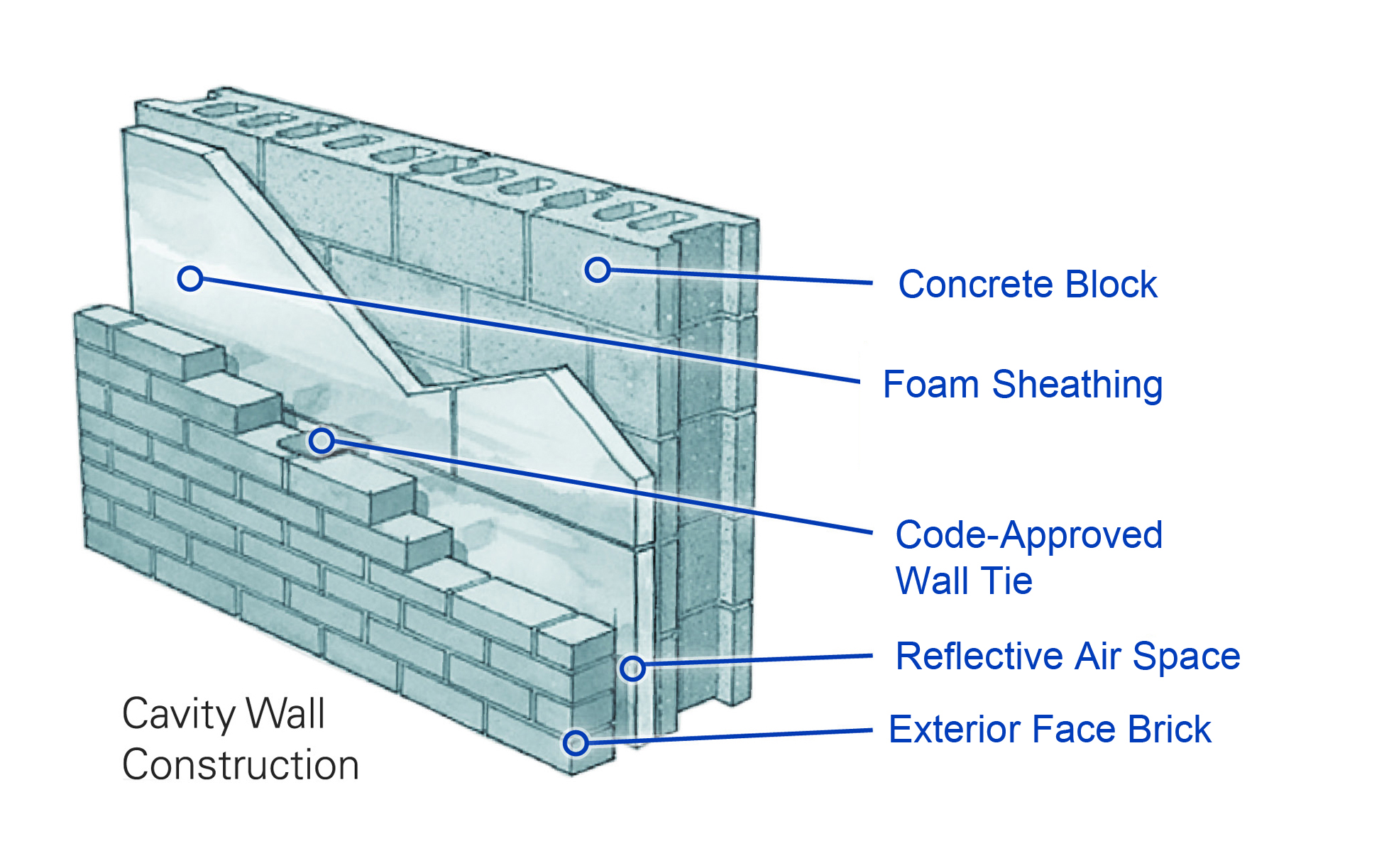
Planning is key to maximizing continuous insulation
Continuity of the insulation and air barrier systems is a well-known, critical element when designing a high-performance building. A steel-framed wall with R-13 batt or sprayed polyurethane foam (SPF) cavity insulation is really performing at about R-6.5 (i.e. RSI 1.14), and there is no cavity R-value effective enough to compensate for the thermal bridging unless ci is installed. The insulation’s density will also affect performance; one should aim for a ‘2-lb’ closed-cell density or greater, which also provides a vapour barrier.
However, as mentioned, communication and planning must take place early and often to prevent errors and oversights increasing cost or decreasing efficiency. While the most important phase of the ci process is the actual installation, planning and pre-work in the earlier phases determine whether the installation will be successful or particularly challenging.
Rim joists and floor slabs
Added structural material at rim joists results in more material to act as a thermal bridge. Rim joists can be difficult to access for proper sealing and insulation. Fortunately, they will not cause thermal bridging if ci is installed on the building’s exterior. On the other hand, there will be thermal bridging when the continuous insulation is installed on the interior, which can happen with masonry buildings or retrofit projects.
When exterior ci is not in the plan, SPF should be considered for insulating rim joists. The foam expands to fill holes made by wall and floor penetrations, and stops air and water vapour from entering or escaping. When properly installed, sprayfoam always performs at its full-rated R-value. To avoid these issues, one can opt for exterior over interior ci, unless this is impossible due to esthetics, cost, or historical building codes. Exterior ci can often save time and trouble in the long term.
Floor slabs are an especially important consideration during planning due to the high cost of replacing the floor or foundation. Fortunately, the solution is easy when addressed upfront—simply cover the edge of the floor slab with foam sheathing. For floor slabs between storeys in multi-storied buildings, exterior ci is especially important. If there is only wall cavity insulation, the floor slab edge is not insulated and can cause thermal bridging.
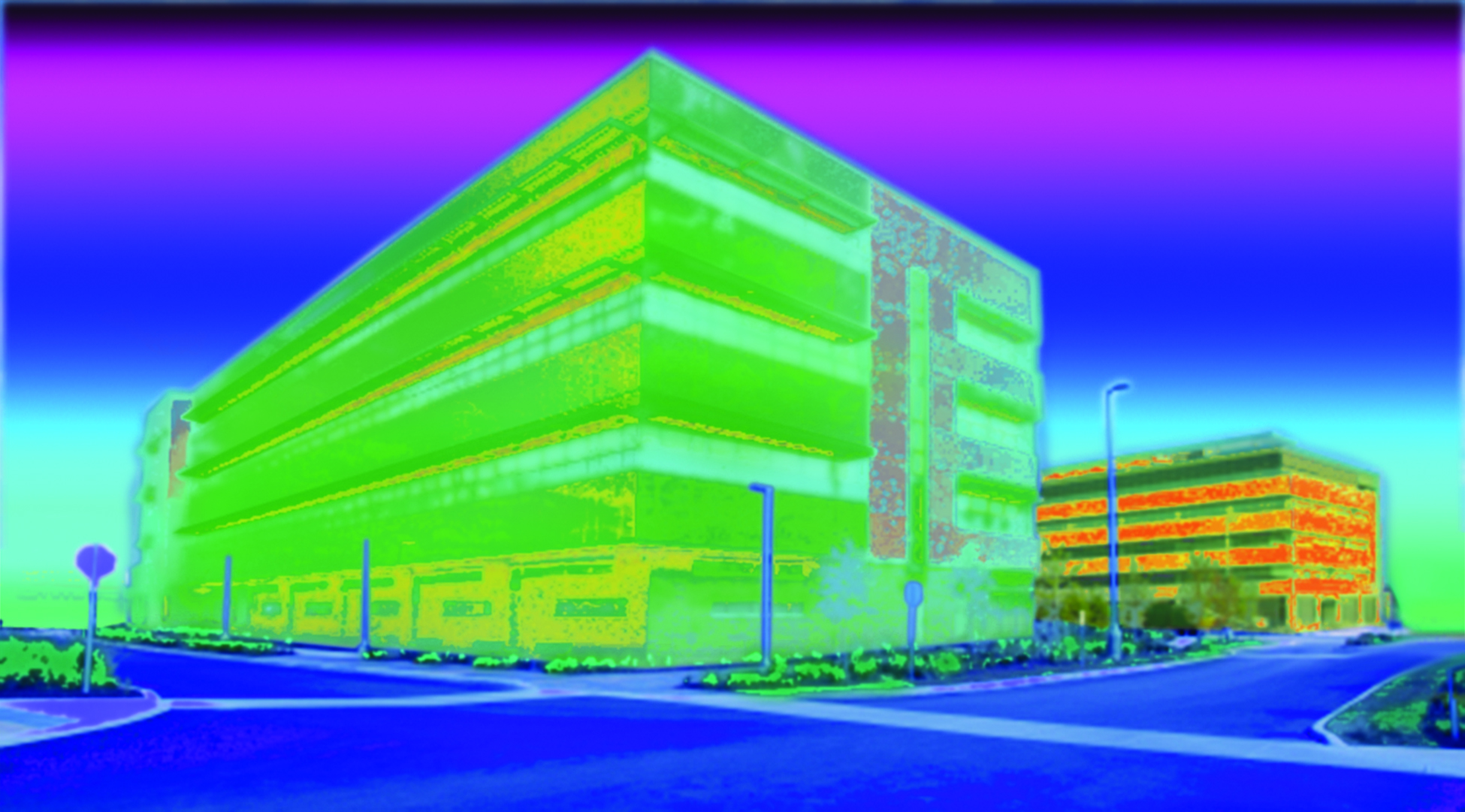
Window and door assemblies
Window frames are conductive, and the panes are not nearly as insulating as the opaque wall. While frames and panes typically account for between 10 and 25 per cent of the total area in most commercial buildings, they can constitute up to half the energy loss.
Canadian Standards Association (CSA) A440.2, Fenestration Energy Performance, requires a window system to have a total heat loss co-efficient of 2.0 w/m2K or lower. This can easily be achieved with a well-specified window. Considerations for specification include:
- using a fibreglass window frame, which conducts heat slower than aluminum or wood;
- doubled-glazed windows (single-glazed windows have U-factor of 5.6 while a double-glazed window has a U-Factor of 2.8); and
- low-emissivity (low-e) coatings or other films to control heat gain; and
- polyvinyl chloride (PVC) thermo seals in lieu of metal stops.
Further, the 2011 NECB limits require a 0.4 to 0.2 window and door area to overall wall area. One solution to reduce the thermal bridging around window assemblies is raising the sill to avoid floor-to-ceiling windows. (Occupants’ feet do not need a view, and most buildings can get plenty of daylight with no more than 20 to 25 per cent glazing.) When energy efficiency and airtightness are the goals, then an all-glass building is a thermodynamic nightmare in Canada and should be avoided.
Transitions
Transitions are not always clearly described in codes or construction documents. Therefore, they are frequently mishandled, causing water to be channelled and trapped in the wall.
Wall-to-floor transitions present an opportunity for severe condensation, icing, and energy loss when not correctly designed or implemented. To maintain ci continuity over the edge of the floor slabs, one should choose designs with shelf angles and other elements that can sandwich over the ci. (However, this may require heavier attachment methods to account for the thickness.)

There are two keys to wall-to-roof transitions:
- Maintain air barriers and drainage up and over parapets and tie it into the roofing system to avoid air leakage and condensation.
- Maintain insulation through the parapet, which is an oft-overlooked thermal bridge in commercial buildings. The exterior face of the parapet should be insulated and brought through to the roof system. A continuous drainage plane should always be installed behind exterior wall cladding, and durable flashings should be installed at the bottom of exterior walls to direct water away from the foundation.
Additional transitions to note are windows, doors, and corners. For windows and doors, the flashings must be tied into the drainage plane. With proper planning and specification, the drainage plane should already be defined and specified on the drawings. The design team should not leave the applicator to speculate or piece together a solution on the jobsite. For corners, the ci should be overlapped, which reduces thermal bridging at these locations and helps maintain air barrier continuity.
Balconies and awnings
When balconies are part of the building design, they are usually a ‘must-have’ element. Nevertheless, many architects budget for nothing more than an extension of the floor slab projecting off the side of the building.
There are other ways to create a balcony that will reduce thermal bridging. Thermally broken balconies are separated from the building structure, allowing heat and air to stay in the building and not leak out through the balcony structure. To achieve this, thermally broken structural supports are available to separate concrete or steel elements. Steel connectors and foam blocks can be specified to secure the balcony to the building. Other options include using a less conductive material such as wood or wood-plastic composites (WPCs), or creating a standalone (or partially so) balcony connected to ground.
Attachments and fasteners
Cladding is an important decorative or protective covering for a building’s walls, roofs, ceilings, and floors. While it adds to the building’s appeal or effectiveness, the cladding’s attachments and fasteners can cause thermal bridging. Fasteners and attachments are typically commodity items intended to meet physical loads, not thermal demands. They are also almost impossible to avoid.
Claddings can be heavy—made of brick, stone, tile, stucco, or metal panels—and must be firmly secured for adequate wind and seismic resistance. The metal fasteners needed to sustain these heavy structures inevitably conduct heat out of the building because metal is nearly 1000 times more conductive than insulation. Cladding attachments with plastic components and sliding connections are gradually coming to the market and will help minimize this effect. In addition to cladding attachments, fasteners for ci can also contribute to thermal bridging. Specifying continuous insulation systems and claddings that minimize fasteners is another way to control the remaining thermal bridges.
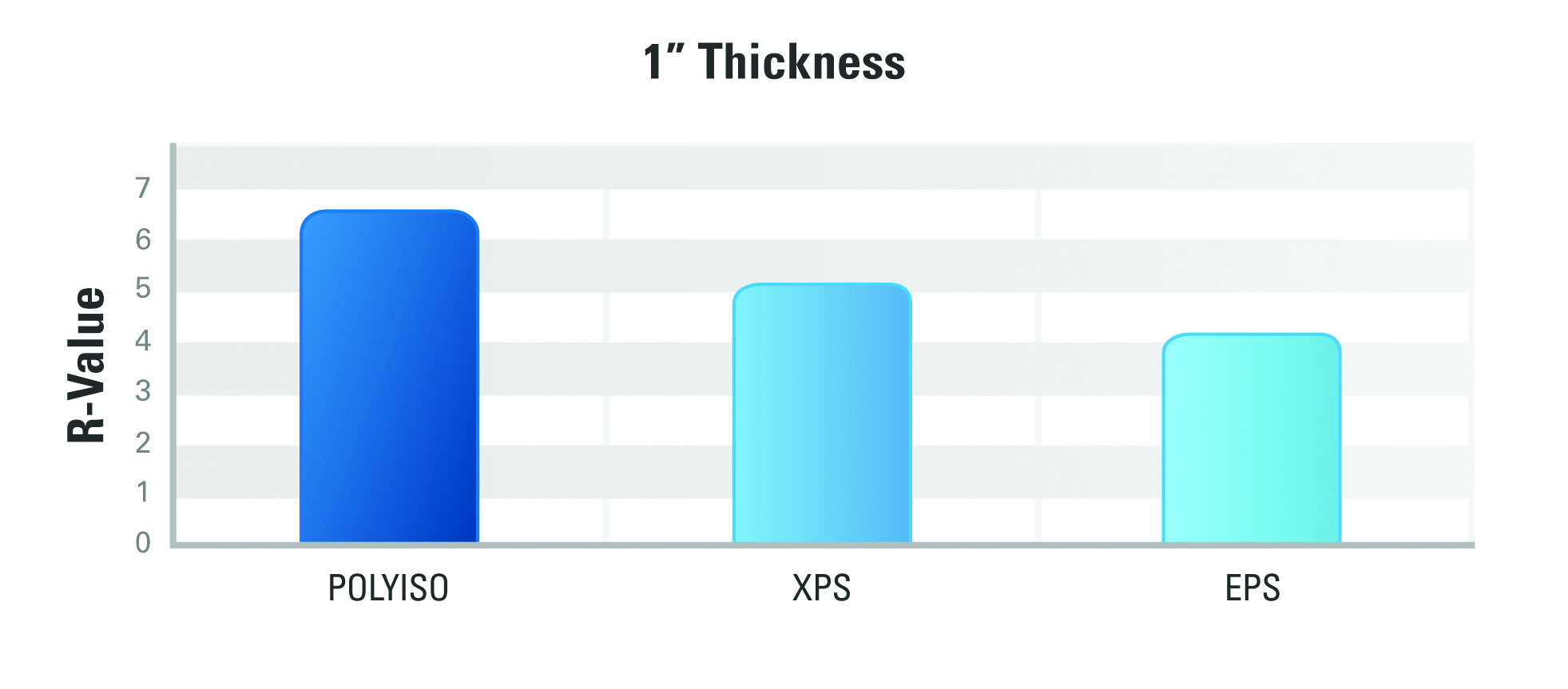
Installation practices
Other tips for installation include:
- Locations of the wall system drainage plane and air barrier must be clearly identified so installers are able to execute the design as intended. Sequencing of installation between windows, exterior sheathings, and continuous insulation systems can be a critical factor in successfully integrating flashings with the rest of the wall system.
- A mockup must be provided on the jobsite. The applicator should build this assembly, making certain the functions of the various components are well-understood so there is no excuse of ignorance.
- Gaps around windows and doors need to be air-sealed with sprayfoam, rather than simply relying on fibreglass. Sprayfoam can also be used for detailing at wall transitions and around cable or plumbing openings as long as a flashing is used to provide a durable water barrier.
- The insulation and installation must both be carefully inspected. The project should incorporate building enclosure commissioning, with plenty of time in the plan for testing as each phase is completed.
- Cavity insulation should never be overlooked. Installing only ci can be expensive and consuming in terms of material, labour, and complexity. A combination of cavity and continuous insulation delivers excellent performance while managing complexity. If installing batts, one must ensure they are trimmed or split properly and are not compressed into tight spaces.
- One must not forget the air barrier, which is not only good building sense, but also mandated per the 2010 NBC. Air pressures from wind, stack effect, or HVAC fans cause infiltration and exfiltration that have an impact on the overall insulation performance and can lead to condensation and air quality problems.
When installed, cavity insulation should touch all six faces of the structure—the front, back, and all four sides. The one exception is sprayfoam, which may not need to fill the cavity’s full depth. In particular, closed-cell spray foam should not quite fill the stud cavity to allow installation of gypsum board. If cavities are overfilled with sprayfoam, contractors must trim or grind down the foam.
Conclusion
No matter the task, attention to detail during installation is critical. The more difficult a material is to install, the more likely it will lead to problems. When considering thermal protection to ensure a building’s energy efficiency and occupant comfort, an understanding of continuous insulation—and the materials that help achieve it—is crucial.
Notes
1 The primary difference between the two is a thermoset hardens (or sets) into a given shape after being heated—a process called ‘curing.’ Once cured, the thermoset material will not re-melt when heated. A thermoplastic material, on the other hand, softens and becomes pliable when heated or exposed to fire. (back to top)
 J.R. Babineau, PE, is a building scientist for Johns Manville. He is responsible for research and technology development of building products and applications, with an emphasis in building science, indoor environmental quality, and energy efficiency. Babineau is actively involved in standards development through the American Society of Heating, Refrigerating, and Air-conditioning Engineers (ASHRAE) and the Building Performance Institute (BPI), and serves on the Board of Directors for Home Energy magazine. He can be contacted via e-mail at francis.babineau@jm.com.
J.R. Babineau, PE, is a building scientist for Johns Manville. He is responsible for research and technology development of building products and applications, with an emphasis in building science, indoor environmental quality, and energy efficiency. Babineau is actively involved in standards development through the American Society of Heating, Refrigerating, and Air-conditioning Engineers (ASHRAE) and the Building Performance Institute (BPI), and serves on the Board of Directors for Home Energy magazine. He can be contacted via e-mail at francis.babineau@jm.com.







